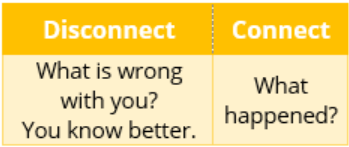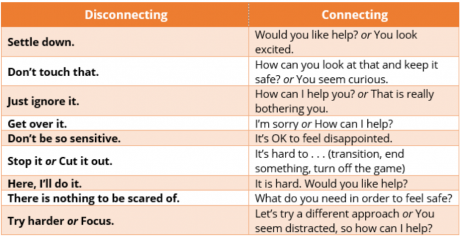Managing Life at Home: Becoming an Emotions Coach


Think of someone in your own life who had the greatest impact on you. What words would you use to describe that person? Warm, available, present, nonjudgmental, consistent, trustworthy, calm? This person is likely one who you felt saw your gifts, who remained patient with your learning, and who supported you through your mistakes. This person likely had the skills of a first-class “emotion coach.”
In her book Kids, Parents, and Power Struggles, Mary Sheedy Kurcinka describes an “emotion coach” as a person who views emotions as an opportunity to connect and one who pays particular attention to the verbal and nonverbal messages that support that connection. Essentially, an emotional coach is someone who helps others sort through their experiences in ways where they feel heard. It is through our close relationships that young people discover who they are, cultivate abilities to shape their own lives, and learn how to engage with and contribute to the world around them. We as parents carry the opportunity to help them foster healthy emotional skills.
We have always known how important relationships are to the development of children. Researchers have spent time documenting the value of connection and family cohesion and the influence of mentors on emotional health and future success. But, what makes one relationship more impactful than another? It is a sense of connection, and there are skills we can learn that help us connect rather than disconnect when we engage.
Here is an example of how our words can break or cultivate connection:

Don’t feel bad; we all do this. I spend a good deal of time educating folks on these strategies, and disconnecting phrases like “cut it out” or “try harder” were parts of my parenting and teaching vocabulary on some days. We are also better at connecting on some emotions, such as sadness, than others, such as anger or even excitement.
We all want to be an emotion coach for the children in our lives because relationships, as well as a sense of connection, are why we became parents. We want to be the person who children can trust and the one who inspires them and safely lets them explore their potential. Doing that on a daily basis, through the ups and downs of our own emotions, however, can be a lot to ask of anyone.
So how can we become emotion coaches and foster connection through our daily interactions?
1.Identify your own emotions: Naming your own emotional state is essential. We all know the difference between how we respond when we are angry or frustrated and when we are calm and patient. By identifying where we are first, we can adjust our response to support connection with our children. Here is a common scenario:
Johnny asks for something he wants, and you are feeling hurried, so without really considering, you respond, “No.” Johnny gets upset, and you are now spending time you did not have managing the reaction.
Your response was dictated by your state of being hurried. Likely, managing the reaction to a quick “no” has increased your own sense of stress. This exchange did not foster connection in either direction. A connected approach might look like this (the words will vary based on the child’s age):
Johnny asks for something he wants. You say, “This seems very important to you. Right now, I do not have the time to listen as carefully as I need to. Let me finish what I am doing, and then you can tell me more about it.”
2. Learn which of your child’s emotions you deal with best: You might do really well with sadness but not anger. Maybe excitement is rough, and you hear yourself say, “Calm down” instead of: “Wow, you look excited; let’s head outside.” Once you know which emotions are harder for you to manage, you can come up with a strategy to reframe your responses.
3. Practice rephrasing common statements: We all have certain phrases we tend to use. Here are some common phrases that disconnect and some substitute phrases that foster connection:

The responses that foster connection do not imply a lack of setting limits, but they rather allow you to validate your child’s emotion and refocus on what a child can do in the situation. The connection that comes from this will pay off in lowered frustration for all and create an opportunity to learn. Next time you find yourself in a tricky situation, consider the role that emotions play, and evaluate how you can apply your newfound skills to become the emotion coach your child or student needs.
Written By Guest Blogger: Jen Perry
Jen Perry currently serves as the Director, Whole Learning and SEL at Edmentum. Jen joined Edmentum as the Learning Designer for Social-Emotional Learning after 30+ years of work with youth in educational and community settings. As a teacher, administrator, and trainer, her passion has been to help educators develop an understanding of the importance of social and emotional learning and build trauma-informed responses and systems. This work has included supporting youth, administrators, and schools in understanding behavior and implementing transformational change through strength-based approaches.